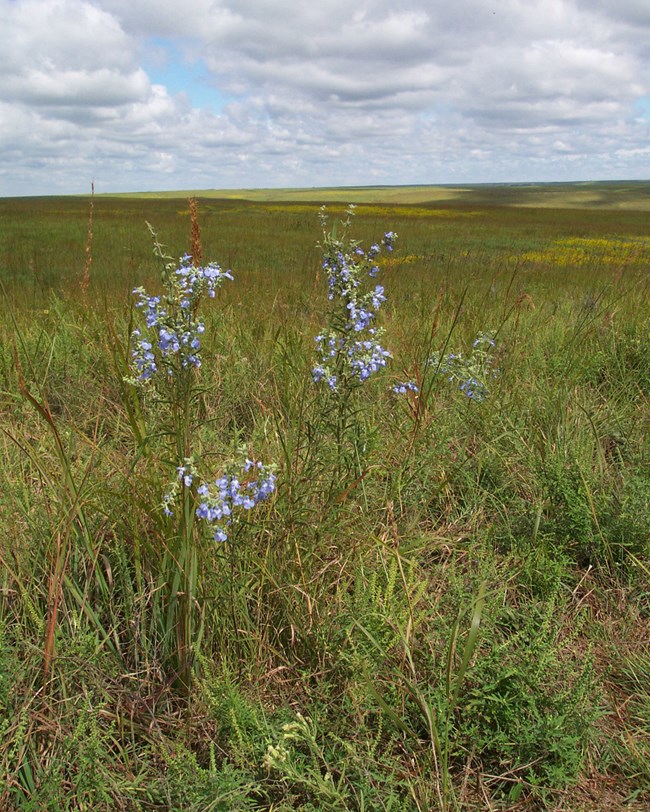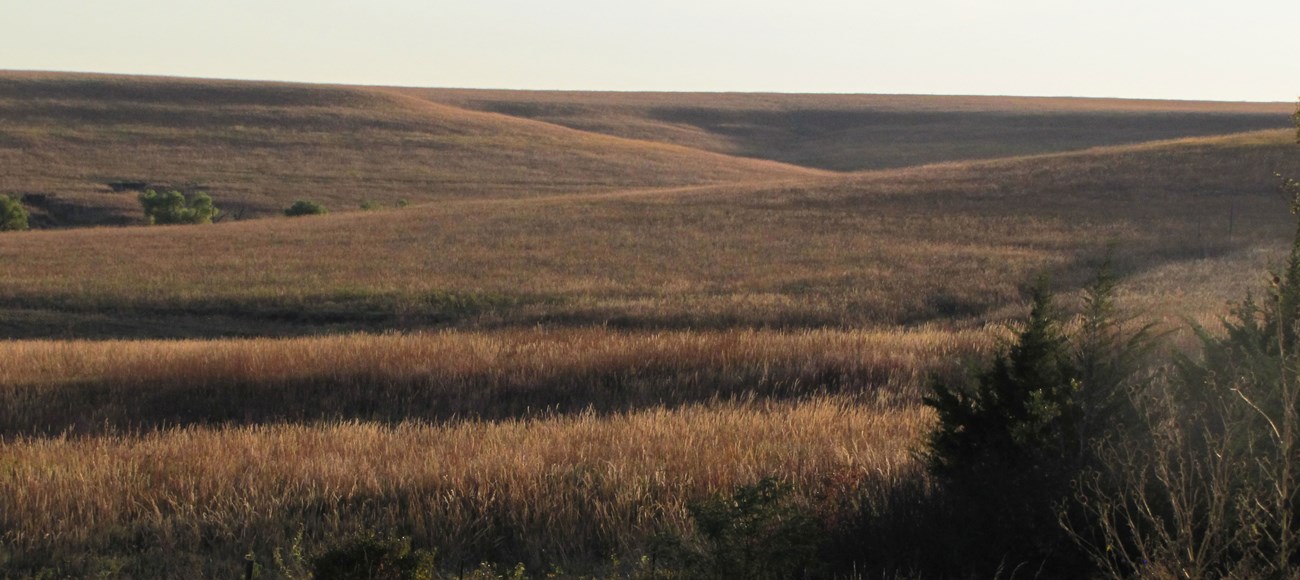Last updated: July 17, 2024
Article
NPS Geodiversity Atlas—Tallgrass Prairie National Preserve, Kansas
Geodiversity refers to the full variety of natural geologic (rocks, minerals, sediments, fossils, landforms, and physical processes) and soil resources and processes that occur in the park. A product of the Geologic Resources Inventory, the NPS Geodiversity Atlas delivers information in support of education, Geoconservation, and integrated management of living (biotic) and non-living (abiotic) components of the ecosystem.

Introduction
Tallgrass Prairie National Preserve (TAPR) is located just north of Strong City about 105 km (65 mi) northeast of Wichita in Chase County, Kansas. The national preserve was established on November 12, 1996, to protect approximately 4,408 hectares (10,893 acres) of tallgrass prairie ecosystem that includes historic buildings and cultural resources of the Spring Hill Ranch in the Flint Hills of Kansas (National Park Service 2016a). Tallgrass prairie was once expansive across North America, but today it is estimated that only four percent remains due to western expansion and agricultural development. The national preserve contains a significant portion of the remaining pristine tallgrass prairie in the Unites States and tells the story of how Native Americans and early settlers lived on and utilized the prairie landscape (National Park Service 2017e). The Spring Hill Ranch Headquarters area in TAPR is a representation of open-range cattle ranching legacy of the Flint Hills region and contains historic structures featuring 19th century architectural styles constructed from locally quarried limestone.

Geologic Setting
Tallgrass Prairie National Preserve lies in the Flint Hills Uplands physiographic province, an elevated erosional plain predominantly underlain by lower Permian limestones, shales (mudstones), and evaporites (Aber 1997). The bedrock underlying TAPR is a diverse sequence of Permian strata divided into two groups (in order from oldest to youngest): (1) the Council Grove Group, including the Eskridge Shale, Beattie Limestone, Stearns Shale, Bader Limestone, Easly Creek Shale, Crouse Limestone, Blue Rapids Shale, Funston Limestone, and Speiser Shale; and (2) the Chase Group, including the Wreford Limestone, Matfield Shale, and Barneston Limestone. Tributary valleys of Fox Creek expose some of the best stratigraphy in the preserve and display some of the oldest bedrock. Young, surficial units mapped within TAPR include Neogene colluvium and alluvium that occur in association with Fox Creek.
Regional Geology
Tallgrass Prairie National Preserve is a part of the Central Lowland Province Physiographic Province and shares its geologic history and some characteristic geologic formations with a region that extends well beyond park boundaries.
- Scoping summaries are records of scoping meetings where NPS staff and local geologists determined the park’s geologic mapping plan and what content should be included in the report.
- Digital geologic maps include files for viewing in GIS software, a guide to using the data, and a document with ancillary map information. Newer products also include data viewable in Google Earth and online map services.
- Reports use the maps to discuss the park’s setting and significance, notable geologic features and processes, geologic resource management issues, and geologic history.
- Posters are a static view of the GIS data in PDF format. Newer posters include aerial imagery or shaded relief and other park information. They are also included with the reports.
- Projects list basic information about the program and all products available for a park.
Source: NPS DataStore Saved Search 3178. To search for additional information, visit the NPS DataStore.
A NPS Soil Resources Inventory project has been completed for Tallgrass Prairie National Preserve and can be found on the NPS Data Store.
Source: NPS DataStore Saved Search 3129. To search for additional information, visit the NPS DataStore.
Related Articles
Tallgrass Prairie National Preserve
National Park Service Geodiversity Atlas
The servicewide Geodiversity Atlas provides information on geoheritage and geodiversity resources and values within the National Park System. This information supports science-based geoconservation and interpretation in the NPS, as well as STEM education in schools, museums, and field camps. The NPS Geologic Resources Division and many parks work with National and International geoconservation communities to ensure that NPS abiotic resources are managed using the highest standards and best practices available.

